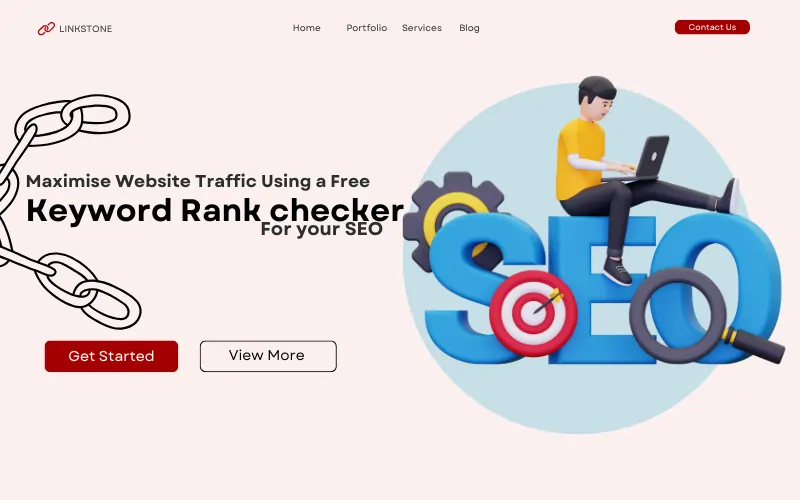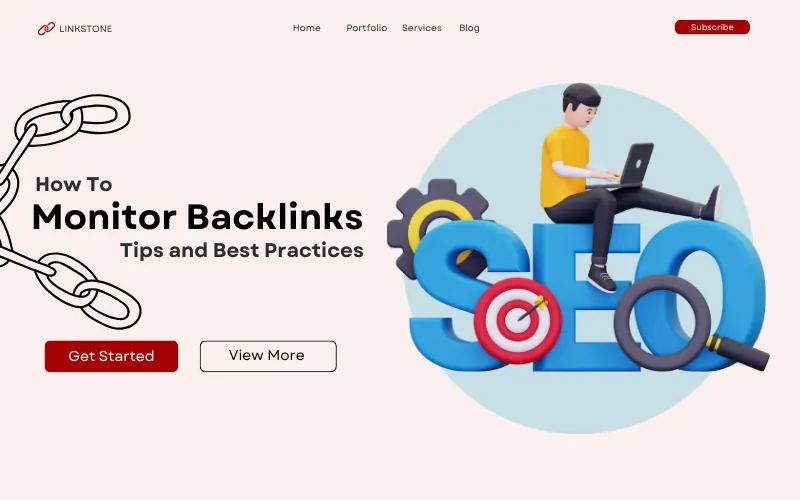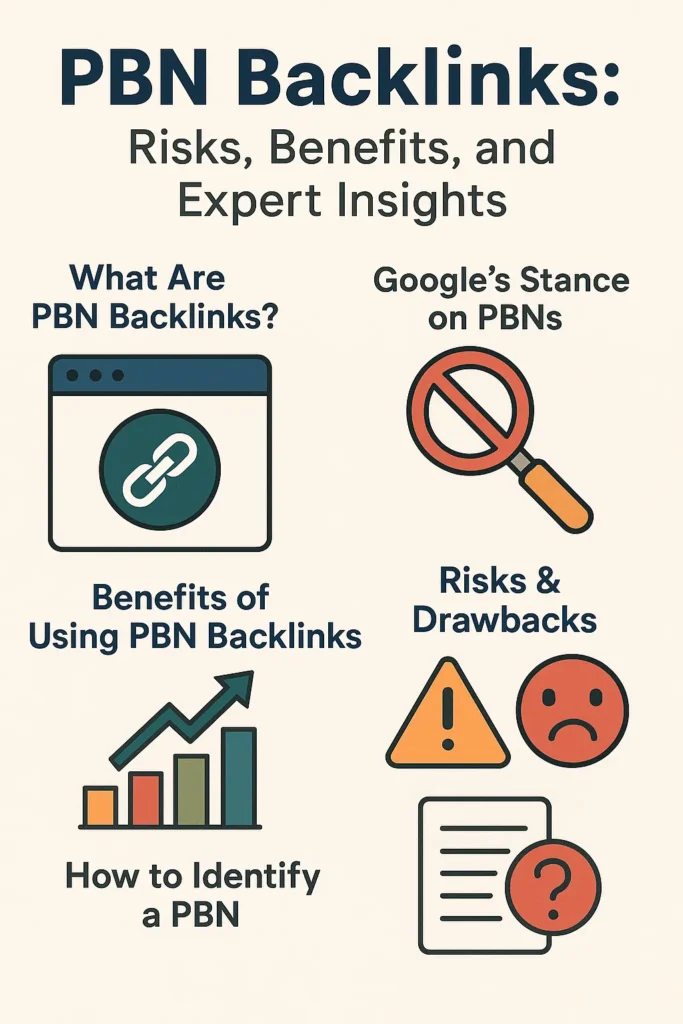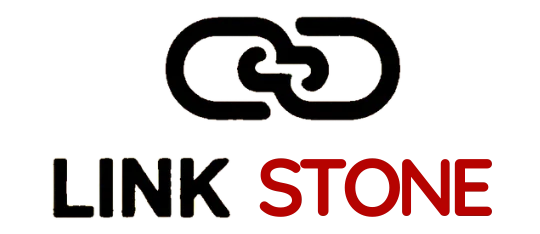Free Keyword Rank Checker Tools To Track Google Rankings Easily

Discover the best free keyword rank checker tools that help monitor website performance and improve SEO strategies. These tools provide instant ranking data, competitor analysis, and keyword insights to enhance website visibility and traffic. By using these tools, you can easily understand which keywords work best, track your competitors, and make smarter SEO decisions to boost your search rankings. Why Use Free Keyword Rank Checker Tools Free keyword rank checkers offer essential insights into search performance. They highlight top-performing keywords, identify areas for improvement, and provide actionable data for better SEO planning. These tools help website owners track progress, make informed decisions, and stay ahead of competitors by continuously monitoring search trends. Real-Time Ranking Updates Most free tools provide immediate updates on keyword positions. Users can quickly spot changes and optimise content accordingly, allowing for timely adjustments and better SEO performance. These insights also help prioritise high-impact changes for faster results. Identify High-Traffic Keywords These tools show which keywords drive the most visitors, helping focus efforts on terms that bring measurable results. They highlight which pages are performing well and reveal new opportunities for content improvement. By understanding this, website owners can prioritise actions that truly impact traffic and conversions. Device-Specific Insights Compare desktop and mobile rankings to optimise content for different devices and enhance user experience. This allows website owners to see which platform performs better, adjust their design and content accordingly, and ensure visitors have a smooth experience on any device. How Free Keyword Rank Checkers Work They are simple to use, requiring minimal technical knowledge. Users input a domain and keywords to instantly get detailed ranking information, competitor comparisons, SERP insights, and actionable recommendations that guide effective SEO strategies. Enter Domain and Keywords Input the website URL and the keywords you want to track. The tool quickly analyses the data and presents easy-to-understand ranking results, showing exactly where each keyword stands on Google and offering actionable insights for improvement. Explore SERP Features Check rankings along with additional SERP features such as featured snippets, knowledge panels, and other Google search elements for a more comprehensive understanding, allowing better optimisation and strategy adjustments. Competitor Analysis Compare rankings against competitors to find gaps and opportunities for improvement. This helps uncover hidden weaknesses in your strategy and identify areas where your website can outperform others, providing actionable steps to enhance overall SEO performance. Benefits of Free Keyword Rank Checker Tools These tools save time, provide actionable insights, allow continuous monitoring to adapt strategies based on search trends, and help identify new growth opportunities. They also enhance decision-making by offering comprehensive visibility into keyword performance and search engine dynamics. Data-Driven SEO Strategy Use the insights to optimise content, improve underperforming pages, and strengthen overall SEO. Additionally, these insights help in refining keyword targeting, monitoring long-term trends, and making informed decisions to maximise website visibility. Focus on Effective Keywords Discover which keywords drive traffic and engagement to boost website performance. These insights allow website owners to strategically focus on high-impact keywords and improve SEO outcomes effectively. Tracking top-performing terms regularly ensures sustained growth and informed decision-making. Automated Tracking Saves Time Automated rank tracking reduces manual work, allowing more time for content and strategy improvement. It provides consistent and accurate tracking of multiple keywords, helps spot trends quickly, and ensures that SEO adjustments are timely and effective. Top Free Keyword Rank Checker Tools Here are some popular free tools for tracking keyword rankings, each offering unique features, ease of use, and reliable performance for tracking keyword positions and gaining insights into SEO effectiveness: Google Search Console: Monitor keyword impressions, clicks, and average positions. This tool provides detailed insights into how your keywords are performing on Google. It also helps identify trends and opportunities for optimization. Ubersuggest: Track keywords, analyze SEO, and compare competitors. You can discover keyword ideas, track your site’s rankings, and get content suggestions to improve your SEO strategy. SERProbot: Simple rank tracking over time. It allows you to monitor your keyword positions regularly, helping you understand changes in your search visibility and adjust strategies accordingly. WhatsMySERP: Monitor multiple keywords daily for free. This tool supports tracking across various search engines and locations, ensuring you stay updated on your keyword performance every day. SEOptimer Free Rank Checker: Check keyword rankings with SEO suggestions. Beyond just tracking, it offers actionable recommendations to improve your search presence and overall site optimization. SmallSEOTools Rank Checker: Provides basic free keyword tracking. It is user-friendly and suitable for quick checks, helping beginners or small businesses monitor their keywords effectively. Ahrefs Free Keyword Rank Checker: Limited free version for quick checks. It provides insights into keyword performance and competitor rankings, making it useful for initial SEO analysis or quick validations. SEO Tips When Using Free Keyword Rank Checkers Optimise content and backlink strategies based on keyword ranking data. Use insights to adjust keyword targeting and refine your SEO campaigns. Monitor trends to spot opportunities and improve overall search performance. Choose Low-Competition, High-Volume Keywords Focus on keywords that are easier to rank for but bring significant traffic. Look for niche-specific terms with manageable competition. Combine short-tail and long-tail keywords to maximise reach and relevance. Improve Content and Backlinks Use ranking insights to refine your content quality and link-building approach. Additionally, analyse user engagement metrics to see which topics resonate most. Adjust your strategy regularly based on both ranking and traffic data for maximum impact. Regular Monitoring Consistently track keyword performance to adjust strategies and maintain growth. Review trends weekly to spot emerging opportunities. Make data-backed adjustments to content and SEO tactics for maximum results. Getting Started with Free Keyword Rank Checkers Setup is quick, results are instant, and tools are free for everyone. You can begin analysing your SEO performance within minutes. No technical expertise is needed, making it ideal for beginners and experts alike. Easy Setup Enter your domain and keywords to start tracking immediately. Add as many keywords as you want to monitor multiple aspects of your SEO. This allows for comprehensive tracking of performance trends
How to Monitor Backlinks: Tools, Techniques & Best Practices

Introduction Backlinks are like digital recommendations for your website, and keeping an eye on them is essential. You might be gaining new links or losing valuable ones without even knowing it. Worse, low-quality or spammy backlinks can quietly hurt your rankings if you’re not paying attention. That’s where backlink monitoring comes in; it helps you stay in control of your SEO progress. In this guide, we’ll explore the tools, methods, and smart habits you need to manage your link profile effectively. Why Backlink Monitoring Matters If you’re serious about SEO, keeping an eye on your backlinks is non-negotiable. Backlinks can boost your visibility, but only if they stay active and clean. Monitoring helps you catch problems early, like broken links or spammy ones that can harm your rankings. Detect Broken or Lost Links Sometimes links to your site disappear without warning. Whether the page was deleted or the link was removed, that’s traffic and authority you’re losing. Regular monitoring helps you spot and recover those lost opportunities. Protect Against Negative SEO Competitors or spammers might point toxic links to your site to bring your rankings down. By tracking new backlinks, you can quickly spot any suspicious activity. Acting fast means you can disavow harmful links before Google notices. Track Competitor Link Building Want to know how your competitors are growing? Backlink monitoring tools let you spy on where their links are coming from. This gives you ideas and helps you spot gaps in your strategy. Measure the Success of Your Campaigns Every time you publish a guest post or run a PR campaign, you hope it gets links. Tracking helps you see exactly which tactics are working. It’s like a feedback loop that sharpens your future efforts. How Backlink Monitoring Works These tools work by regularly crawling the web for mentions of your domain. They log which sites link to you, what anchor text is used, and whether the links are follow or nofollow. You get a snapshot of your backlink profile that updates over time. Monitoring Changes (New, Lost, NoFollow, Anchor Text) You can’t improve what you don’t track. Good tools show you what’s changed: new backlinks, lost ones, and even shifts in anchor text. This helps you stay updated on how your SEO landscape is evolving. Getting Real-Time Alerts and Reports Some tools will ping you the moment a new link is found or lost. This real-time info helps you act fast, especially if something looks off. Plus, easy-to-read reports make it simple to track trends over weeks or months. Best Backlink Monitoring Tools There’s no shortage of tools out there, but a few stand out. Whether you’re on a budget or ready to invest, there’s something for everyone. Let’s look at the top contenders. Google Search Console (Free Option) It’s free and gives you a basic view of your backlinks. While not very detailed, it’s great for getting started. If you’re not using it, you’re missing out on easy insights. Ahrefs Ahrefs is one of the most trusted tools in the industry. It offers deep insights, real-time tracking, and a slick interface. It’s not cheap, but the data quality makes it worth every penny. SEMrush SEMrush is an all-in-one suite that includes backlink tracking. It’s especially useful if you’re running SEO campaigns and want everything in one place. The data is accurate, and the platform is user-friendly. SE Ranking SE Ranking balances price and performance well. You get backlink updates, website audits, and competitor research in one tool. It’s perfect for freelancers and small agencies. Monitor Backlinks As the name suggests, this tool focuses solely on backlinks. It’s clean, straightforward, and gives great alerts. Great for users who want something simple and focused. Linkody Linkody is known for its ease of use and affordability. It sends daily updates and has a dashboard anyone can understand. Ideal for beginners and budget-conscious marketers. LinkBox LinkBox combines backlink monitoring with link management. You can group and label links, making it easy to stay organised. It’s a great tool if you’re managing links for multiple clients. OpenLinkProfiler It’s a free tool that’s surprisingly capable. You won’t get the deepest data, but it’s enough to monitor basic backlink activity. Perfect for early-stage bloggers and solopreneurs. Brand24 Brand24 is more of a media monitoring tool, but it catches backlink mentions too. It’s helpful if you care about both SEO and brand visibility. Good for PR teams and marketers. Ubersuggest Neil Patel’s tool offers backlink tracking along with keyword research. It’s not as powerful as Ahrefs, but it’s great for startups. Additionally, it offers a free version to test the features. Choosing the Right Backlink Tool Start by thinking about your needs. Are you an agency, a blogger, or a business? Your budget, goals, and team size all matter when picking a tool. Don’t just go for the biggest name go for what fits. Compare Features (Alerts, Metrics, Competitor Tracking) Look at what each tool offers: do you want email alerts, anchor text tracking, or competitor insights? Not all tools offer everything. List your must-haves before signing up. Evaluate UI and Reporting Options Some tools offer amazing data but with clunky dashboards. Pick something easy to navigate and that explains things clearly. Good UI saves you hours in the long run. Free vs. Paid Tools: What’s Worth Paying For? Free tools are good to start with, but they often miss key features. Paid tools offer better accuracy, more alerts, and competitor data. Consider it an investment, not a cost. How to Use Monitoring Data Effectively Tracking links is step one, but what you do with the data is where the value is. Identify patterns, spot weak spots, and double down on what’s working. Let the data guide your link building game. Fix Broken or Lost Backlinks Use the tools to find which links have vanished. Then, reach out to the site owners and ask them to restore it. You can often recover valuable links just by asking. Disavow Toxic or Spammy Links If
PBN Backlinks: Risks, Benefits, and Expert Insights

What Are PBN Backlinks? Definition & Purpose PBN backlinks originate from private blog networks, a group of websites created solely to pass link juice to a target site. These sites are often built using expired domains with existing authority, and their primary purpose is to manipulate search engine rankings. How Private Blog Networks Work SEOs purchase aged domains with backlinks and repurpose them with new content. Then, they link to their money sites using exact match or partial match anchor texts. These backlinks look organic to crawlers, but to Google, this can raise red flags if not done carefully. Google’s Stance on PBNs Search Console & Link Spam Updates Google has explicitly warned against manipulative link schemes, and PBNs fall squarely into this category. Updates like Penguin and the more recent Link Spam Update are designed to devalue such links or penalise websites benefiting from them. Historical Penalties In 2014, Google famously deindexed entire PBNs overnight. Even today, many SEOs report sudden drops in traffic due to manual actions or algorithmic detection of shady link patterns. Benefits of Using PBN Backlinks Full Control Over Anchor Text & Placement One of the biggest attractions of PBNs is control you decide what anchor text to use, where to place the link, and how many links to send. Short-Term Ranking Boosts (Case Study) In several anecdotal cases, PBNs have helped sites jump from position #12 to the first page in under 4 weeks. One affiliate marketer saw a 42% increase in organic clicks within 30 days by leveraging 5 strong PBN links. Risks & Drawbacks Manual and Algorithmic Penalties Google is getting smarter. If your backlink profile looks unnatural or heavily reliant on a cluster of PBN links, you risk manual action, deindexation, or algorithmic suppression. Cost, Maintenance & Reindexing Risks Running PBNs isn’t cheap; you pay for domains, hosting, content, and reindexing. And even then, Google might eventually devalue them. Brand Reputation & Ethical Impacts If your site gets exposed for using PBNs, it can damage your brand’s trust. Agencies working with clients need to be particularly cautious. How to Identify a PBN Low-Quality Content & Footprints Most PBN sites have generic or spun content, lack social signals, and follow predictable link patterns. A sudden influx of links from sites with similar designs is also suspicious. Link Patterns & Hosting Similarities Using the same IPs, nameservers, or content themes across domains can create detectable footprints. Tools like Majestic, Ahrefs, and SEMRush can help spot these. Tools & Indicators Myths vs Facts About PBNs “PBNs Don’t Work Anymore” They do temporarily. But unless they’re high-quality and used with extreme caution, their long-term sustainability is poor. “All PBNs Are the Same” False. Some PBNs are built with authority sites, active social media, and great content, while others are nothing more than expired domains with spun junk. Safer Alternatives to PBNs Guest Posts & Outreach High-authority guest posting remains one of the most reliable white-hat strategies. You earn links by offering real value and building relationships. Digital PR & Content Marketing Media mentions, data studies, and viral content bring natural backlinks from big publishers without gaming the system. Infographics, Social Signals, and Communities Platforms like Reddit, Pinterest, and niche forums allow your content to gain organic traction, bringing real backlinks over time. If You Still Consider PBNs: Best Practices Pick Aged Domains with Clean History Use tools like Wayback Machine and Ahrefs to check if a domain was previously spammy. Avoid anything with pharmacy or casino links in its history. Vary Anchors & Diversify Link Profile Avoid keyword stuffing. Mix in branded anchors, generic phrases, and even naked URLs. Monitor with Ahrefs, Moz, and Search Console Keep track of your backlinks, lost links, and anchor diversity. If something looks unnatural, be proactive. Have an Exit/Disavow Strategy Always be ready to disavow risky links if penalties hit. Maintain a clean, updated disavow file in Search Console. Conclusion & Final Recommendation PBN backlinks can work, but they come with serious risks. For beginners or brands that rely on long-term organic growth, they are often not worth the gamble. If you’re considering PBNs, make sure you understand the consequences, diversify your link profile, and combine them with white-hat strategies to reduce footprint. Want sustainable rankings? Focus on content, outreach, and authority. Frequently Asked Questions (FAQs) About PBN Backlinks Are PBN backlinks legal to use? Yes, PBNs are not illegal, but they violate Google’s Webmaster Guidelines. This means Google can penalize your site or devalue your links if it detects manipulative tactics. Do PBN backlinks still work in SEO today? They can work in the short term, especially in low-competition niches. But the risk of penalty and long-term instability makes them unreliable as a core SEO strategy. How does Google detect a PBN? Google looks for patterns like hosting similarities, repeated anchor text, thin content, or sites that only exist to link out. Tools like Ahrefs or Majestic can also help uncover such footprints. Can I buy PBN backlinks safely? No PBN is ever 100% safe. However, if someone is determined, they should choose links from high-quality, well-maintained PBNs with unique IPs, niche relevance, and real content, and even then, proceed with caution. What’s the best alternative to PBN backlinks? Focus on guest posting, editorial mentions, digital PR, and content marketing. These not only improve rankings but also build brand authority without risking penalties. Should agencies use PBNs for their clients? Highly discouraged. A Google penalty on a client site can destroy trust and lead to contract loss. Agencies should prioritise white-hat strategies for long-term results.
Link Building Pricing: How Much Should You Pay?

If you’re exploring linkbuilding to improve your website’s authority and rankings, you’re probably wondering: How much should I pay?Link building pricing can vary significantly depending on factors such as link quality, niche, domain metrics, and service type. In this guide, we’ll break down common pricing models, real-world examples, and tips to get the best value for your SEO budget. Common Pricing Models Per-Link Pricing (DA/DR-Based Tiers) One of the most popular ways to structure link building pricing is by the number of links, typically based on domain authority (DA) or domain rating (DR). Typical rates: Prices vary depending on the niche, quality of the site, and whether the link is editorial or directory-based. Monthly Retainers Many agencies offer monthly link building retainers: Monthly retainers usually include outreach, content creation, link acquisition, and reporting with set expectations on the number and quality of links. Project-Based Packages If you prefer one-off campaigns, many agencies offer project-based linkbuilding: Perfect for site launches, migrations, or seasonal SEO pushes. Performance-Based Pricing Some vendors offer performance-based linkbuilding tied to traffic or ranking results, but this model is rare and typically used by advanced agencies or in long-term partnerships. What Drives Link Building Prices? Domain Metrics & Niche Relevance Higher DA/DR and niche-relevant sites command higher prices. Links on popular sites in competitive industries (finance, SaaS, health) cost more than generic directory links. Outreach, Content Creation & Management Effort You’re paying for more than a link; the time, expertise, and relationship-building required for top placements drive costs up. Link Quality (Editorial vs Directory/PBN) Vendor Markup & Agency Overheads Agencies typically mark up vendor link cost by 50–100% to cover: Example: A vendor link might cost $150 raw, but be sold for $400 with full service. In-House vs Outsourcing Cost Comparison Building an Internal Team Running in-house linkbuilding can cost ~$177K per year: Agency / Freelancer Costs Pros & Cons of Each Route In-house: More control, higher setup costAgency: Faster results, less internal overhead What You Should Expect to Pay Typical Per-Link Rates by Quality Budget for 15–30 High-Quality Links/Month Building authority typically requires 15–30 links monthly: Reasonable Markups for Full-Service Packages Markups of 50–100% are common when agencies handle content, outreach, QA, and link guarantees. How to Audit Link Building Proposals Before hiring an agency or buying links, audit their proposal: Asking these questions protects your investment and avoids paying for low-value placements. Tips to Get Fair Pricing Ask for Breakdown Link Fee + Service Fee Transparency matters; insist on seeing the split between link cost and service fees. Approve Domains Before Purchase Pre-approve domains to avoid irrelevant or spammy placements. Monitor Link Status & Replace Drops Links may drop naturally; our provider should monitor and replace them as needed. FAQs Why are links per-DA tier priced differently?Higher authority sites require better content, more outreach effort, and publisher relationships. Is $300–500 per link normal?Yes, this is standard for editorial links on genuine sites in competitive industries. Can I get quality links for $100 or less?It’s possible, but typically not editorial links on strong domains. Vet low-cost offers carefully. How long does it take to see results from link building?Generally, 2–4 months, depending on competition, link quality, and how often search engines crawl the new links. Are all backlinks equally valuable?No. Editorial links from high-authority, relevant websites offer much greater value than directory or forum links. Can I just buy a large volume of cheap links?Quantity without quality can harm your site. A few high-quality links will always outperform hundreds of spammy ones. Should I prioritize DR or traffic when buying links?Ideally both. DR indicates authority, while traffic shows real audience engagement. Balanced metrics give the best results. Conclusion Understanding link building pricing helps you set realistic budgets and avoid poor-quality providers. Prioritize: Start small, test partners, and scale what works. A smart linkbuilding investment can drive long-term SEO growth and better rankings.
